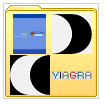
Hard drive screen shot. Clockwise from top left: cpb.tumblr (via gif anime via rising tensions); bill schwarz; js's spam (via nasty nets); bill schwarz

Hard drive screen shot. Clockwise from top left: cpb.tumblr (via gif anime via rising tensions); bill schwarz; js's spam (via nasty nets); bill schwarz
Trigonometry GIFs from Wikipedia posted on Nasty Nets have been making the rounds of the tumblr blogs over the last 48 hours - very exciting to watch - documented here, partially, by a graphing process I don't really understand (is this a tumblr feature?).
This is kind of like the dispersion Seth Price talks about, only without Petzel gallery as a hub. (joke)
Or, a real time version of the spread of the OptiDisc GIF I flacked on the Net Aesthetics 2.0 panel last summer, without the paper/installation version that documented it.
"Submersible Kit" [mp3 removed]
a bit quieter - rearranged a Battery demo pattern - played around with some pitch shifting automation that was in the demo, applying it to other parts of the track - the bass line (Mutator-ed electribe riff) drifts in and out of tight sync with the rest
Formalist art criticism and the politics of meaning
(hat tip schwarz)
Haven't read all this yet but am saving the link to come back to. Don't think this critic understands the art he or she is calling "formalist."
And possibly confuses the extremes of late Greenberg theory with the studio practices Greenberg chronicled early on.
Greenberg believed that the subjects of the visual arts should be their respective media. Painting should be about paint, and sculpture about the materials of sculpture. It follows that politics and narrative, as extraneous to the art media, debase the purity of visual art. Formalists evaluate art according to physical qualities such as color, size, shape, line, texture, and so on, and treat the ideational content of works as irrelevant. They view themselves as being mainly protectors and upholders of high aesthetic standards.
This is an idiot's view of abstract art and the reasons for doing it. Greenberg was not this unsophisticated, didactic as his later criticism became. To reject verbal narrative, theatrics, etc in art isn't to reject "ideational content." It is to recognize that the ideas of many paintings are expressed non-verbally and require new kinds of metaphors. Greenberg adopted and codified the language he heard artists using in mid 20th Century studios ("push-pull," etc.). Much of this language centered on the properties of media but only hack artists stop there. The ones who wrote, such as Mondrian or Newman, tended to the philosophical. Unfortunately, reduced to writing, you have to deal with such ideas as writing. Trained as a writer, Greenberg had little use for windy bloviation and therefore insisted on what was verifiable or falsifiable.
Abstract art is just as difficult and radical a proposition now as it was fifty years ago, and still drives social critics crazy, such that they have to make its practitioners and advocates into pedants quoting Ralph Mayer's The Artist's Handbook (a text on methods and materials) as some kind of governing philosophy.